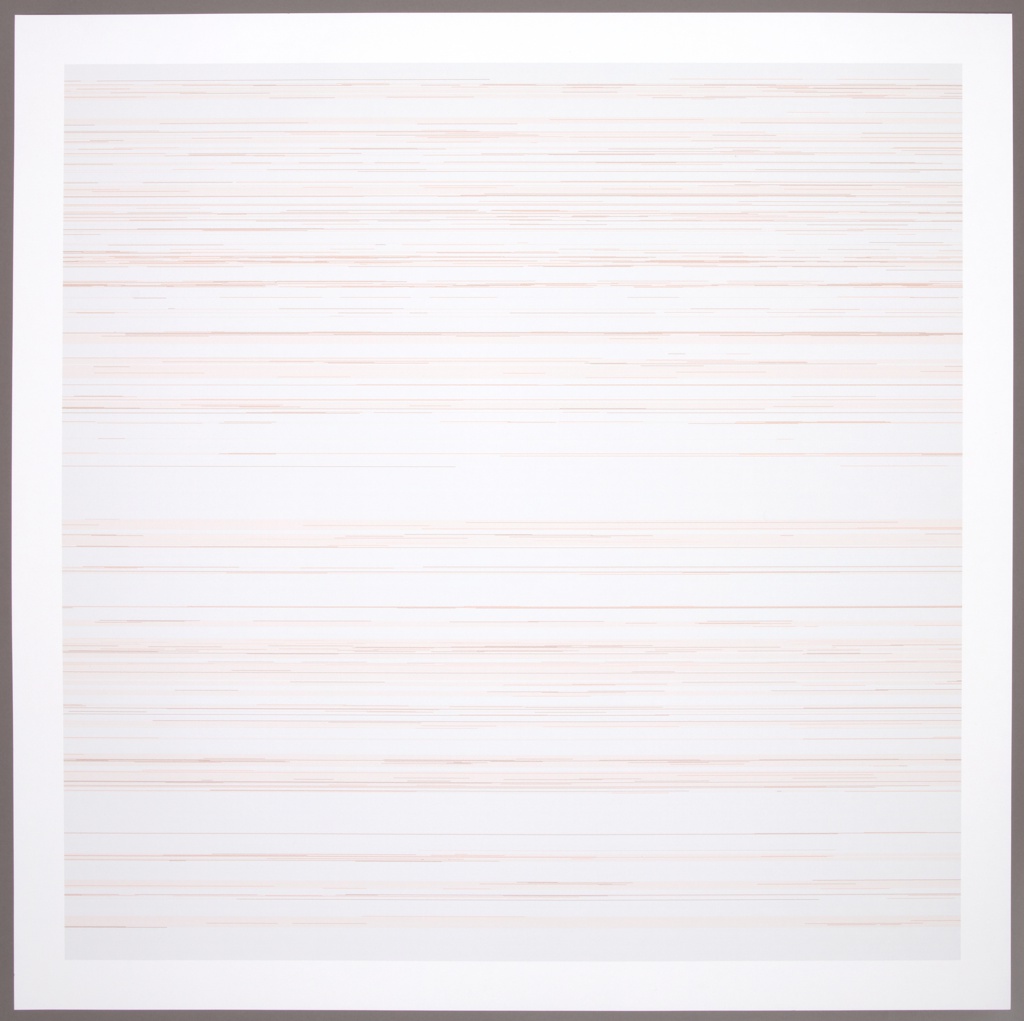The image is © Ben Fry, 2009. See our image rights statement.
Object Timeline
|
2002 |
|
|
2017 |
|
|
2022 |
|
|
2024 |
|
Print, Chromosome 20
This is a Print. It was designed by Ben Fry. It is dated 2002 and we acquired it in 2017. Its medium is digital print on archival paper. It is a part of the Drawings, Prints, and Graphic Design department.
Ben Fry is a computer scientist and graphic designer who works with big data sets. Among his earlier self-initiated projects, Fry’s Chromosome series visualizes the vast scale of genomic data. There are over three billion letters – represented as sequences of A, C, G, and T – of genetic code in the human genome. That genetic data is carried on chromosomes, with the higher numbered chromosomes among the shortest in the genome. Fry created chromosome maps to make the scale of our DNA more intelligible.
Chromosome 20 is a visualization of the XX million letters of genetic code that comprise chromosome 20. As geneticists understand it today, only 3% of our genome consists of “active” code – sequences of letters known to have a function in the human body. The remaining 97% of our genome currently has no known function, thought to be leftover from the evolutionary process. For his Chromosome 20 map, Fry listed the letters of the entire chromosome in succession, replacing the “junk” letters with gray, single-pixel dots. The “active” coded letters are represented in a three-pixel font with a one-pixel border, tiny but still legible. As Fry explains, “the darker color depicts sequences of code (called exons) that are known to be used by a cell as the set of instructions for building a protein. These instructions are interrupted by unused pieces of code (introns) which here have a medium coloring.” The resulting visualization allows us to see the “active” coded data against the field of “junk” dots. Depicted at this scale, this image is only 1/X of the XX million letters that comprise chromosome 20. XXX images of this size would be needed to show the entire human genome.
Fry created his Chromosome series while getting his PhD at MIT Media Lab. He credits Cooper Hewitt as being among the first institutions to include his Chromosome and genetic work. Chromosome 20 was included in Cooper Hewitt’s 2003 exhibition “Inside Design Now: National Design Triennial.” It was displayed with Fry’s first visualization in the series, Chromosome 22, as well as the Chromosome 21 visualization to show the development in his genome series.
Fry began creating his Chromosome series outside the Processing environment, using a Java program with custom code and “scraps of personal code,” according to Fry. From these, he generated tiff images and PDF files. Early projects such as this were influential in what Processing, which Fry created with Casey Reas, would become, informing even pragmatic functions. For instance, the reason Processing can render to PDF files is because Fry was generating files for institutions like Cooper Hewitt.
This object was
donated by
Ben Fry.
It is credited Gift of Ben Fry.
Its dimensions are
H x W: 91.4 × 91.4 cm (36 × 36 in.)
Cite this object as
Print, Chromosome 20; Designed by Ben Fry (American, b. 1975); digital print on archival paper; H x W: 91.4 × 91.4 cm (36 × 36 in.); Gift of Ben Fry; 2017-11-6
